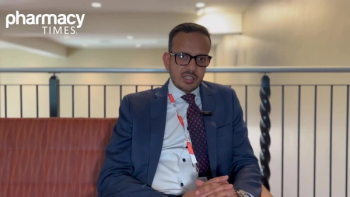
Physician-Pharmacist Collaboration May Increase Adherence to Opioid Addiction Treatment
A pilot study published today in Addiction found that a collaborative approach to treating opioid use disorder that relies heavily on community pharmacists is feasible and may increase adherence and participant satisfaction.
A pilot study published today in Addiction found that a collaborative approach to treating opioid use disorder that relies heavily on community pharmacists is feasible and may increase adherence and participant satisfaction.
Most people with opioid use disorder who would benefit from medication do not receive it, according to the study. Although buprenorphine is a safe, effective medication that has been used in opioid addiction treatment for nearly 2 decades, providers must complete training and receive a special waiver in order to prescribe buprenorphine to treat opioid use disorder.
In the United States alone, fewer than 10% of primary care providers are authorized to prescribe buprenorphine and more than 20 million people in the United States live in a county without a buprenorphine-waivered physician. This lack of access is a significant barrier to treatment, specifically for those living in underserved communities, according to the study.
To further address treatment gaps, researchers studied the transfer of care among 71 participants using buprenorphine maintenance therapy for opioid use disorder from waivered physicians to trained community pharmacists. The team found that nearly 89% of participants remained in the study and 95.3% adhered to the daily medication regimen.
During the 6-month trial, no opioid-related emergencies or hospitalizations were reported. Further, the proportion of opioid-positive urine drug screens was less than 5% at month 6 among participants who completed all urine drug screens in the study. Participants, physicians, and pharmacists alike reported high rates of satisfaction with the program, according to the press release.
The researchers recruited 71 adults currently receiving office-based buprenorphine treatment for opioid use disorder in the Raleigh-Durham, North Carolina area from March to December 2018. Six physicians and 6 community pharmacists took part in the trial, with the initial treatment phase—or when the buprenorphine dose is gradually increased until a satisfactory daily dose is reached—being carried out under the care of a waivered physician.
Following this, participants attended monthly maintenance visits in which pharmacists dispensed buprenorphine, assessed how well the medication was working, and provided counseling and referrals to specialists as needed. Pharmacists were able to provide feedback to the partnering physician to adjust buprenorphine dosage as needed, according to the press release.
The research team concluded that the pilot study offers strong support for advancing physician-pharmacist team-based approaches to leverage the abundant resource of community pharmacies in expanding access to opioid use disorder treatment with buprenorphine. Larger clinical trials are recommended to establish strategies and approaches to most effectively implement team-based buprenorphine care and respond to the needs of diverse clinical settings and populations.
REFERENCE
Physician-pharmacist collaboration may increase adherence to opioid addiction treatment. NIH [email]. Sent January 11, 2021. Accessed January 11, 2021.
Newsletter
Stay informed on drug updates, treatment guidelines, and pharmacy practice trends—subscribe to Pharmacy Times for weekly clinical insights.



















































































































































































































